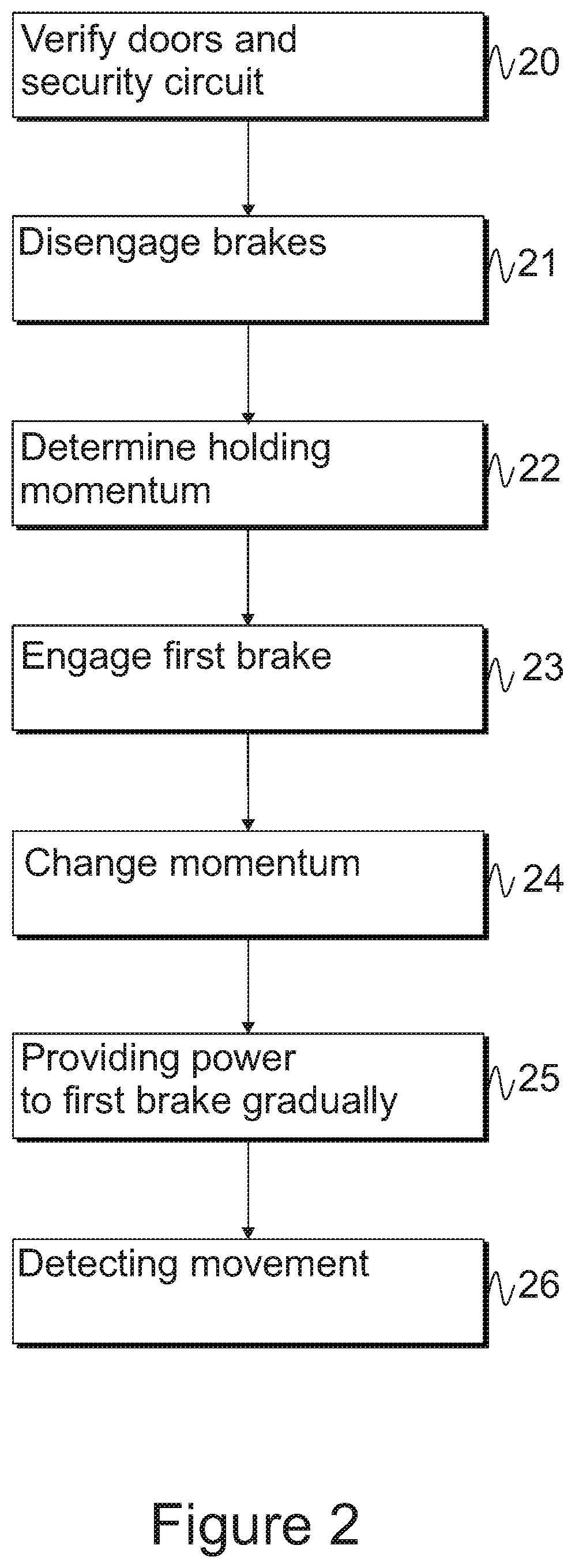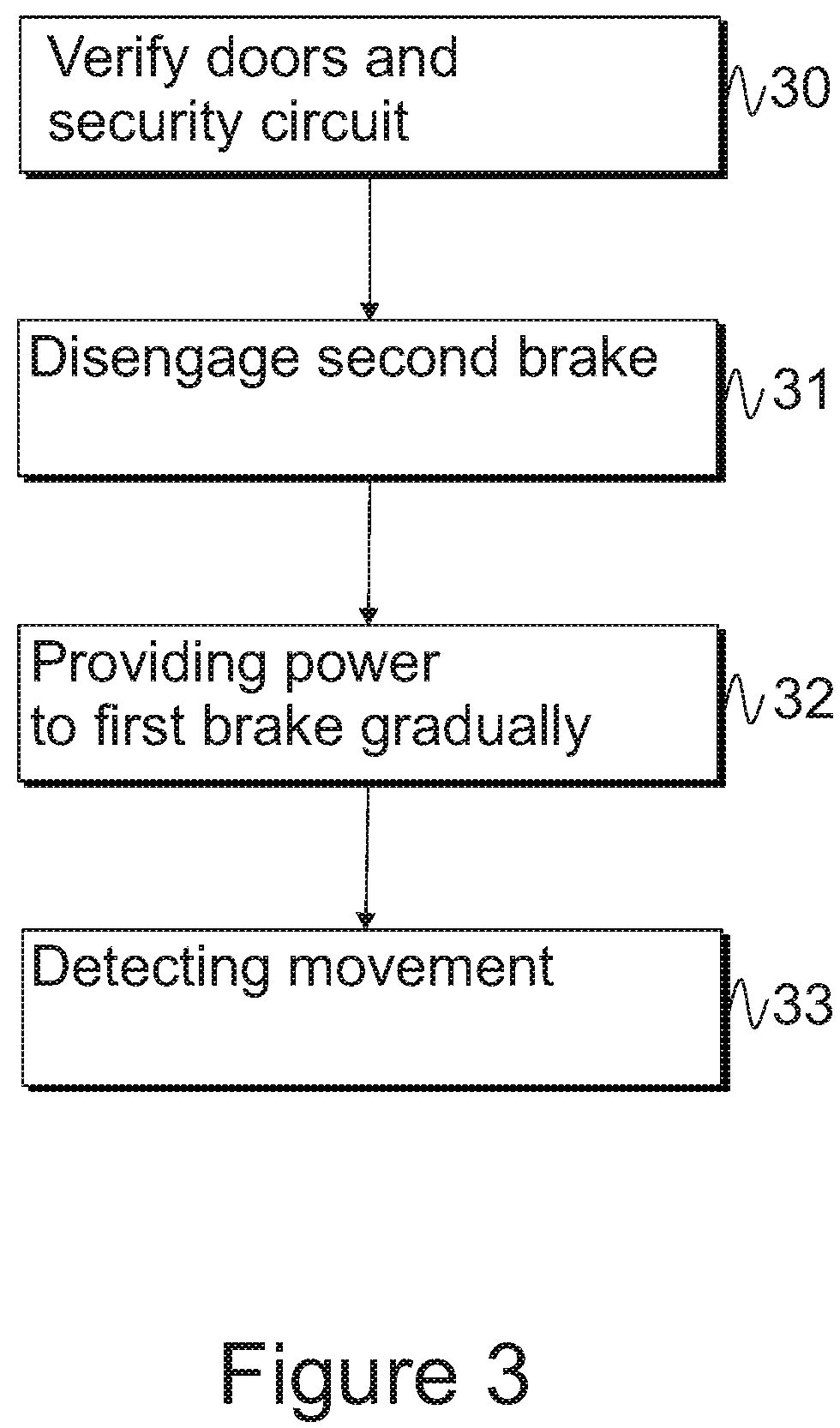Elevator brake release monitoring
a technology for releasing brakes and elevators, applied in elevators, hoisting equipment, instruments, etc., can solve the problems of reducing affecting the service life of the brake, so as to reduce the wear of the brake, and be more reliable
- Summary
- Abstract
- Description
- Claims
- Application Information
AI Technical Summary
Benefits of technology
Problems solved by technology
Method used
Image
Examples
Embodiment Construction
[0014]Reference will now be made in detail to the embodiments of the present invention, examples of which are illustrated in the accompanying drawings.
[0015]In FIG. 1 a block diagram of an arrangement according to the present invention. In the figure a traction sheave 11 is attached to a shaft 10 that is connected to the hoisting machine that is not shown in the figure, however, any conventional hoisting machine known to a person skilled in the art may be used.
[0016]In FIG. 1 an arrangement relating to brakes is discussed in more detail. In figure two independently operable brakes 12a-15a and 12b-15b are disclosed. The number of brakes in the example is two, however, any other number of brakes is acceptable for the present invention. Furthermore, one brake is enough to hold the elevator car, however, two, or even more, brakes are preferred and sometimes even required by regulations. Thus, in case of a brake failure in the first brake a second brake is still operable. In normal opera...
PUM
 Login to View More
Login to View More Abstract
Description
Claims
Application Information
 Login to View More
Login to View More - R&D
- Intellectual Property
- Life Sciences
- Materials
- Tech Scout
- Unparalleled Data Quality
- Higher Quality Content
- 60% Fewer Hallucinations
Browse by: Latest US Patents, China's latest patents, Technical Efficacy Thesaurus, Application Domain, Technology Topic, Popular Technical Reports.
© 2025 PatSnap. All rights reserved.Legal|Privacy policy|Modern Slavery Act Transparency Statement|Sitemap|About US| Contact US: help@patsnap.com



